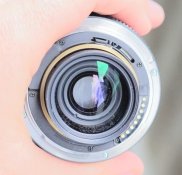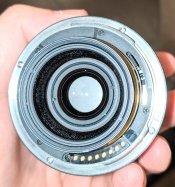connorgeoff
Member
I just received a lens (Mamiya G 50mm) and on the back glass there is clearly something present (either balsam seperation or fungus)
From the photo attached does anyone know how this/if this will effect image quality.
I will test the lens, but in the essence of time I am looking for input from your past experiences

Thanks
From the photo attached does anyone know how this/if this will effect image quality.
I will test the lens, but in the essence of time I am looking for input from your past experiences
Thanks


















